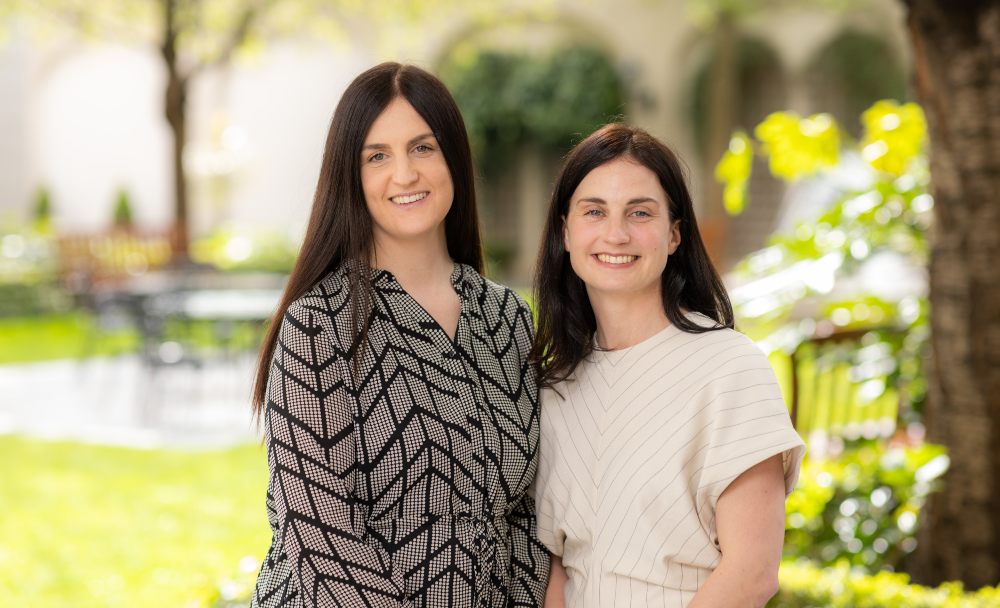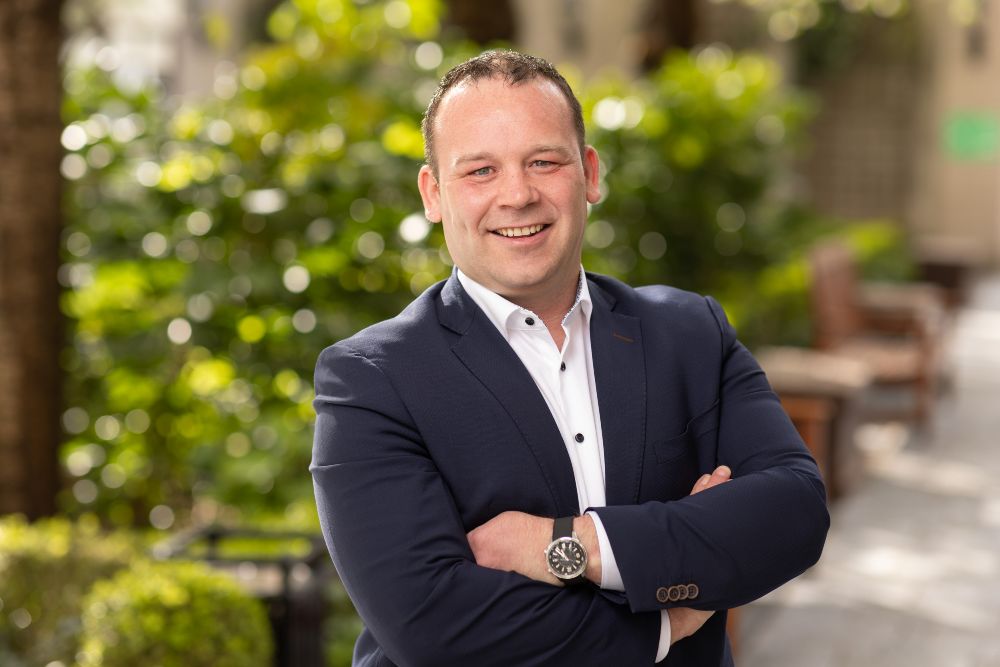Move over Elon Musk! Irish siblings and EY Entrepreneur of the Year finalists David, John and Ruth Mackey from Mbryonics are building the gigabit internet in space.
There is no doubt about it, Tesla and SpaceX founder Elon Musk’s innovations are bringing the world the promised future of the Jetsons that the world of big tech has so far failed to deliver. And his Starlink satellite internet service is making the promise of ubiquitous internet a reality with profound economic and social implications.
But an innovative breakthrough by Galway siblings David, John and Ruth Mackey from Mbryonics that uses laser technology could blast Starlink out of the sky in terms of superfast broadband speeds. Think of it as making Starlink akin to dial-up and Mbryonics the fibre optics network of the space age internet.
“We are expecting 40,000 satellites to be in orbit by the end of the decade and each one of those satellites will have a space laser attached to it. Our ambition is they will all have Mbryonics tech on board”
This year 24 Irish finalists have been named for the EY Entrepreneur of the Year Awards which take place in November. Currently in its 27th year in Ireland, the programme works to recognise, promote, and build a supportive community around Ireland’s high-growth entrepreneurs and is considered one of the strongest programmes globally.
Since its inception, the EY Entrepreneur Of The Year Ireland community has grown to a tight-knit network of more than 600 alumni who harness each other’s wealth of experience, with three quarters (75%) conducting business with one another. Together, the EOY alumni community generates revenues of €25bn, and employs more than 250,000 people across the island of Ireland.
In the past 11 months the finalists have engaged in a strategic growth programme which includes a week-long CEO Retreat in South Africa.
The gigabit internet in space
Among the finalists is Mbryonics, a young business that is at the forefront of transforming satellite communications, datacoms and 5G wireless industries through cutting-edge wireless optical transport and Coherent Photonic Optical (CPO) transceiver technologies. This will ensure high-speed, secure communication infrastructure in space, air and on land.
“We intend to be the catalyst building for a booming space tech sector in the West of Ireland”
The business earlier this year landed a €17.5m investment from the European Innovation Council (EIC) accelerator that will allow the company to establish a significant manufacturing, assembly and testing facility for optics and photonics in the west of Ireland over the next five years.
Right now Ireland’s western edge should be giving Mr Musk plenty to be thinking about when it comes to deep tech.
The Mackeys’ ambition to make the west of Ireland a cutting-edge manufacturing hub echoes that of a fellow Galwegian and EY Entrepreneur of the Year finalist Dr Barry Flannery of Xerotech in the sphere of batteries for off-road electric vehicles.
At Mbryonics, CEO John Mackey spearheads the business while David and Ruth are the scientific core of the business.
As John explains it, both Ruth and David completed their PhD journeys in the area of optical communications and their research coincided with the first demonstrations of optical laser communications in space involving NASA and the Japanese Space Agency.
“We were basically having dinner one night and agreed between us we have the brain power to deliver this area successfully as a business. Ruth was passionate about lasers in space and David did research in the same area under the same professor and I felt I could help them deliver on their vision.”
While John leads the business and Ruth and David deliver on the technology, John says all three are very entrepreneurial, much like their parents. “We would all have a passion for engineering, but at the end of the day we know our various strengths. Ruth is very much the ultimate physicist and David can translate that research into fundamental technology that can deliver.”
Space: The next digital frontier
Their core product looks at first glance like a torch that wouldn’t look out of place on the prow of a Titanic era steamship. But actually, it is a device that will sit on satellites and is capable of beaming down data at gigabit speeds.
As the world has evolved from 3G to 4G and now 5G, the dense land-based networks are struggling to deliver. Space really is the next frontier for data.
Ruth Mackey explains that it is her ambition that the next 40,000 satellites that will reach orbit in the next decade will include Mbronics’ technology which will be capable of delivering data at speeds 1,000 times faster than existing satellite data comms.
“You can imagine that once that satellite connectivity becomes so ubiquitous with high-speed data and low latency, the mobile operators won’t have to continually build out lots of fibre or cell towers, but instead can reliably leverage space-based infrastructure that gives them global coverage.”
She explained that many of their competitors are delivering at best dial-up speeds compared with what Mbryonics could deliver.
“We are building a technology roadmap that will literally leap over the 3G and 4G type data speeds of existing offerings and go to a 5G type capability in terms of speed and latency.”
David explained that the business of Mbryonics will be very much B2B, focusing on large system integrators and aerospace firms like Boeing and Lockheed Martin as well as large telecoms operators like Vodafone, T-Mobile or AT&T.
“Our vision is to sell our hardware to these companies. 90% of the components in our hardware are all designed and manufactured in-house in the west of Ireland.”
Ruth adds: “We really see where the market is growing and the part that we hope to play is to provide a service level to an end-to-end satellite optical transport network for data. There will be ground infrastructure around the globe and then our space labours will be on board the satellites. We are expecting 40,000 satellites to be in orbit by the end of the decade and each one of those satellites will have a space laser attached to it. Our ambition is they will all have Mbryonics tech on board.”
She said that when such networks are active, data speeds of thousands of gigabits will be achievable anywhere on the planet. “If we use laser instead of radio waves, we can send thousands of gigabits per second of data.”
The physics challenge of what the Mackey siblings are trying to achieve boils down to how much power will be required for satellites transmitting vast quantities of data. It’s not too much far removed from the current challenge of delivering electricity to vast data centres.
“We’re trying to do it much more efficiently in space,” Ruth explained. “Our technology is extremely light, it’s basically a flying battery pack. Efficient satellites don’t have too much power to work with and when you’re trying to send data at speeds a typical data centre would work with, it needs to be done much more efficiently in space. So our focus is on making this really power efficient. As a result we’ve made some of the most power-efficient transceivers on the planet.”
Lifting off
John Mackay said that the reason Mbryonics successfully landed EIC investment was because its ambition and vision to create potentially thousands of space tech jobs on Europe’s western seaboard matched the EU’s ambitions to build the industry in Europe.
“They recognised our ambition, but also the potential risk in that the only way we could grow was if we were to transition to America. They didn’t want to lose this opportunity to Silicon Valley and decided to get behind it.”
He agrees with Barry Flanagan’s assessment that getting Irish and European investors to back visionary opportunities that could generate thousands of jobs is a slow burn. It quintessentially boils down to risk appetite.
“We’ve struggled on the venture capital front, certainly. The issue here is getting investors to take on that risk, but to also believe we can do it and build Apple-level businesses. But does it ever move fast enough? Does change ever happen fast enough? You have to be optimistic. It is important to recognise that change is happening. We are seeing organisations like Enterprise Ireland demonstrate greater ambition, they are talking about writing bigger cheques.”
John says it isn’t necessarily down to local venture capital players writing bigger cheques, but having a health mix of local and international investment. “I think you always have to have that international mindset because if you stay too local with your vision and execution you will struggle. We’ve had to go to the US where the customers are. We need to work with the international space agencies, the global industrial base and the end customers all over the world, break down the barriers and join the dots. And it can happen. Yes, our venture capitalists need to be more ambitious, but as entrepreneurs we can also break down some of the barriers and make it happen.”
“There is greater ambition and appetite in Europe to build deep tech industries of scale. There are fundamental things changing in Europe when it comes to building these industries.
“We intend to be the catalyst building for a booming space tech sector in the West of Ireland.”
-
Bank of Ireland is welcoming new customers every day – funding investments, working capital and expansions across multiple sectors. To learn more, click here
-
Listen to the ThinkBusiness Podcast for business insights and inspiration. All episodes are here. You can also listen to the Podcast on:
-
Spotify
-
SoundCloud
-
Apple






